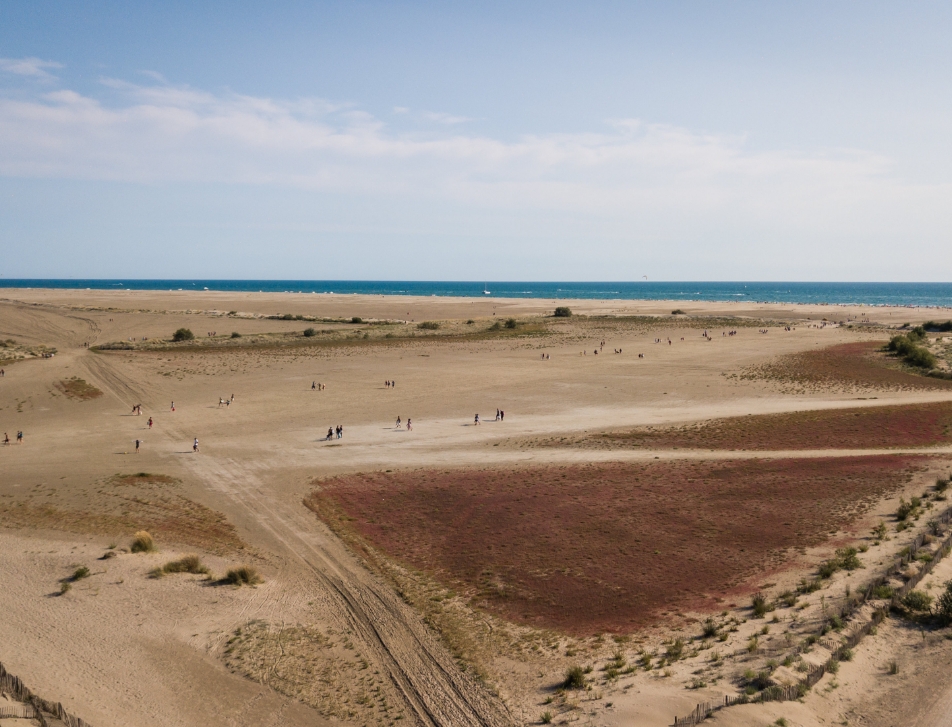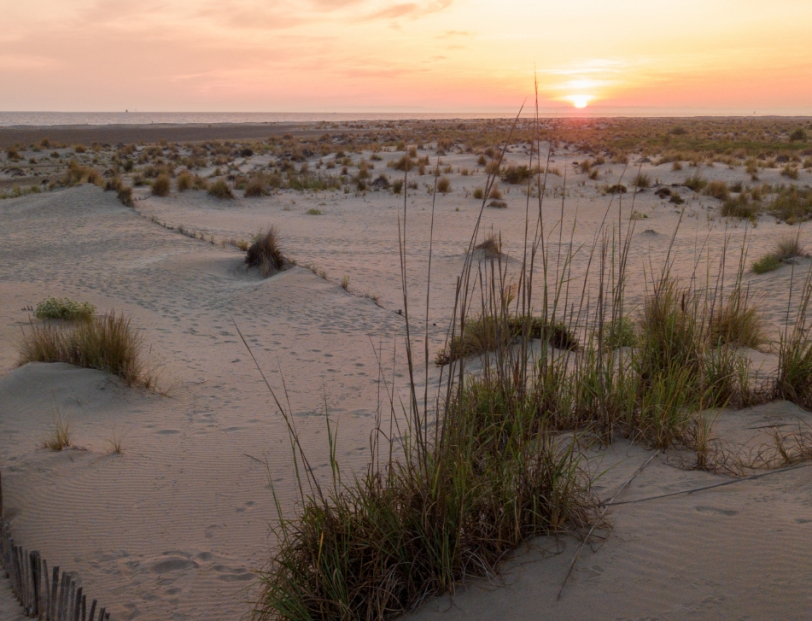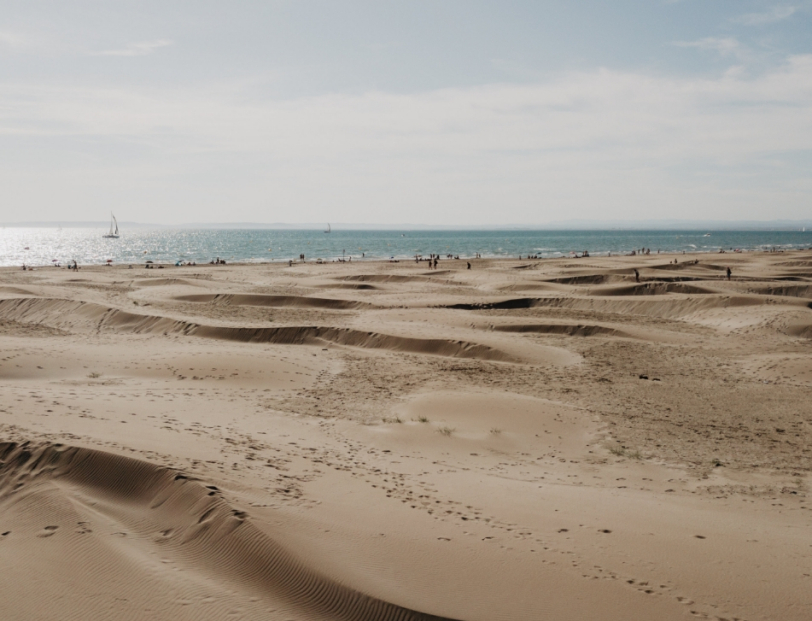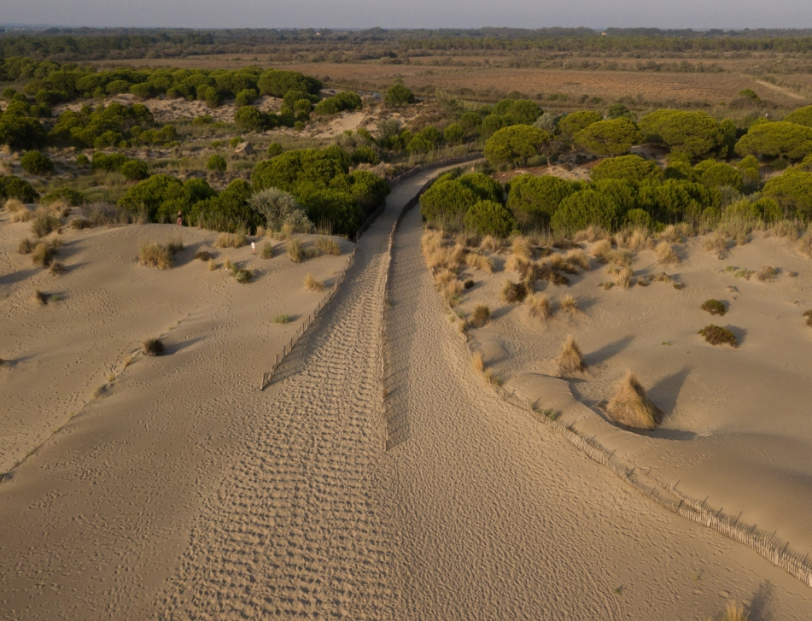Espiguette beach
The Espiguette tip, classified as a natural site in 1994, and the lighthouse, classified as a historic monument in 2012, bear witness to a permanent dialogue between man and his environment. Together, they tell the story of the evolution of the perception of the coastline which, in almost a century and a half, has gone from fear to enchantment, from confrontation to environmental balance.
Espiguette to the infinite...
With its white dunes that reach up to 12 m high, and its endless beach, Espiguette forms a dune system admired by all environment lovers. Included in the perimeter of the Grand site de la Camargue gardoise in 1998 and classified as a Grand site de France in 2014, it is 534 hectares of protected natural area, i.e. 10 km of coastline free of any construction.
IN ITS RAW AND WILD STATE
Sensitive dunes: under each step of man, a grain of sand that took 100 years to climb the dune, will fall back down in 1 second ! This is why preservation work is carried out: ganivelles, wooden footbridges, signs to make visitors aware of the fragility of this environment, the need not to climb the dunes, reconstruction and reinforcement of 2 dune strips... to protect the Espiguette plain as much as possible, to control this travelling sand and to ensure that the site and its many visitors live together as well as possible. We enjoy the site but we respect it !
The fauna and flora are characteristic of the dune environment. There are 109 species of birds, including 25 rare and protected species, as well as numerous insects and amphibians such as lizards and frogs !
Vegetation exists at the foot and above the dunes. There are dune-building plants such as oyat and spurge, and those that help to stabilise the dunes, such as sand lilies, sea grapes and panicum.
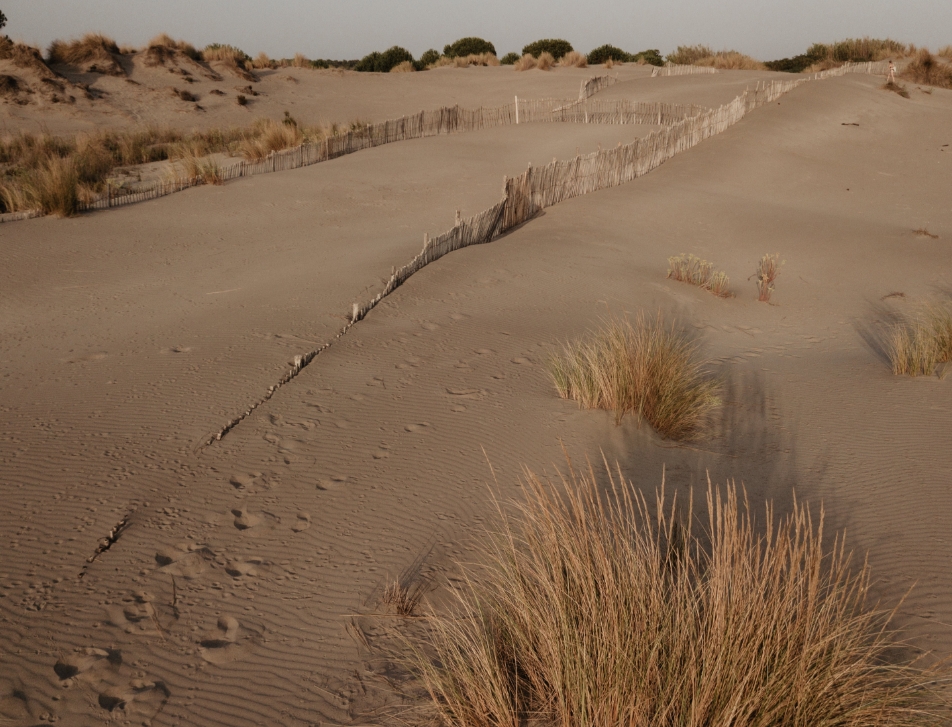
THE GUIDE'S TIP
Even if the dunes of the Espiguette beach seem indestructible, they are sensitive: a grain of sand that took 100 years to climb the dune can fall back down in 1 second with each step of man. To protect this magnificent landscape as much as possible, you should not climb or walk on the dunes.
The beach of Espiguette is a real natural treasure to be protected !
A PROTECTED AREA
This once widespread habitat is now a relict of a rare and threatened dune system on the French Mediterranean coast. Its 10 km of beach constitute one of the most beautiful dune systems in the northern Mediterranean basin. Untouched by any construction and unique in Europe, this exceptional and fragile natural heritage is covered by the Natura 2000 habitat directive.
Its dune massif is framed by high dunes, parallel to the beach, which help to preserve the site from total silting up. For these reasons, access to the Espiguette lighthouse is only allowed via a marked path: the wooden footbridge. This arrangement offers the opportunity to discover and promote a fabulous site, but above all to protect this natural heritage which is highly exposed to natural hazards and to the damage caused by frequenting and crossing the dunes. By using this footbridge, you will have the opportunity to overlook the dune without risking damaging it.
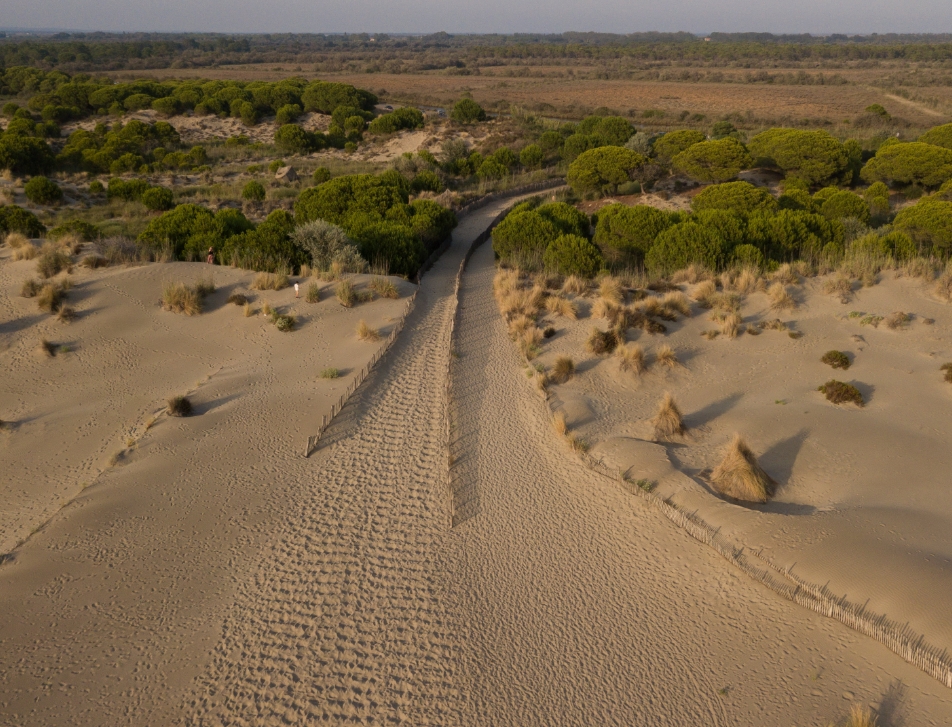
A BEACH CLEANED BY HAND
In 2012 the commune made a radical choice: to clean the 10 km of the Espiguette beach... by hand. No more machines.
The machines made the beach smooth and clean but with disastrous consequences for the erosion and biodiversity of our fragile ecosystem. Thanks to manual cleaning, the coastal guards are slowing down the erosion phenomenon. A machine removes the sand from a depth of about 20 cm, but rakes it all away, including the organic waste that makes up the ``sea line``, a mixture of shells, algae and wood. Because unlike the artificial residues of human activity in summer, natural waste, deposited naturally by the sea, is useful. During the winter, driftwood, seaweed and shells are pushed inwards. Once covered by the sand, they form embryonic dune strips that become vegetated. Since 2012, the dune massifs have grown and now constitute a natural bulwark against the rise of the sea.
